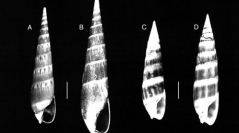

 Zoosystema
21 (2) - Pages 199-248
Zoosystema
21 (2) - Pages 199-248A detailed morphological study is provided of the Brazilian Terebridae Hastula cinerea (Born, 1778), H. hastata (Gmelin, 1791), Terebra brasiliensis Smith, 1873, T. crassoreticula n. nom. (replacing the junior homonym T. reticulata Simone & Verissimo, 1995), T. gemmulata Kiener, 1839, T. leptapsis n. sp., T. taurina (Lightfoot, 1786), and T. spirosulcata Simone & P. M. Costa n. sp. Terebra sterigma n. sp. is represented by shells only. Anatomically, the terebrids appear to be characterized by the reduction of the cephalic tentacles, the anterior extremity of the ctenidial vein being prominent and without gill filaments, and the rhynchodeal introvert and the anus being situated very posteriorly in the pallial cavity. The species of Hastula examined are characterized by an enlarged foot and by the complexity of the osphradium filaments The species of Terebra examined are characterized by the eye situated at the tip of the tentacles, and also by a tendency for enlargement of the introvert, and reduction of the proboscis and the venom apparatus with their entire loss in some species (T. gemmulata and T. brasiliensis). The accessory proboscis structure is present in three of the Terebra species studied, and it is hypothesized that it may be a character of the family, as it is present in some Hastula species, and it may have been secondarily lost in several species of the family. Based on anatomical similarities, it is hypothesized that the conoidean proboscis is derived from a pleurembolic proboscis, homologous to the buccal mass part of this proboscis type, and the rhynchodeal wall is homologous to the remaining regions of the pleurembolic proboscis.
Gastropoda, Terebridae, anatomy, systematics, proboscis, homology, Brazil.